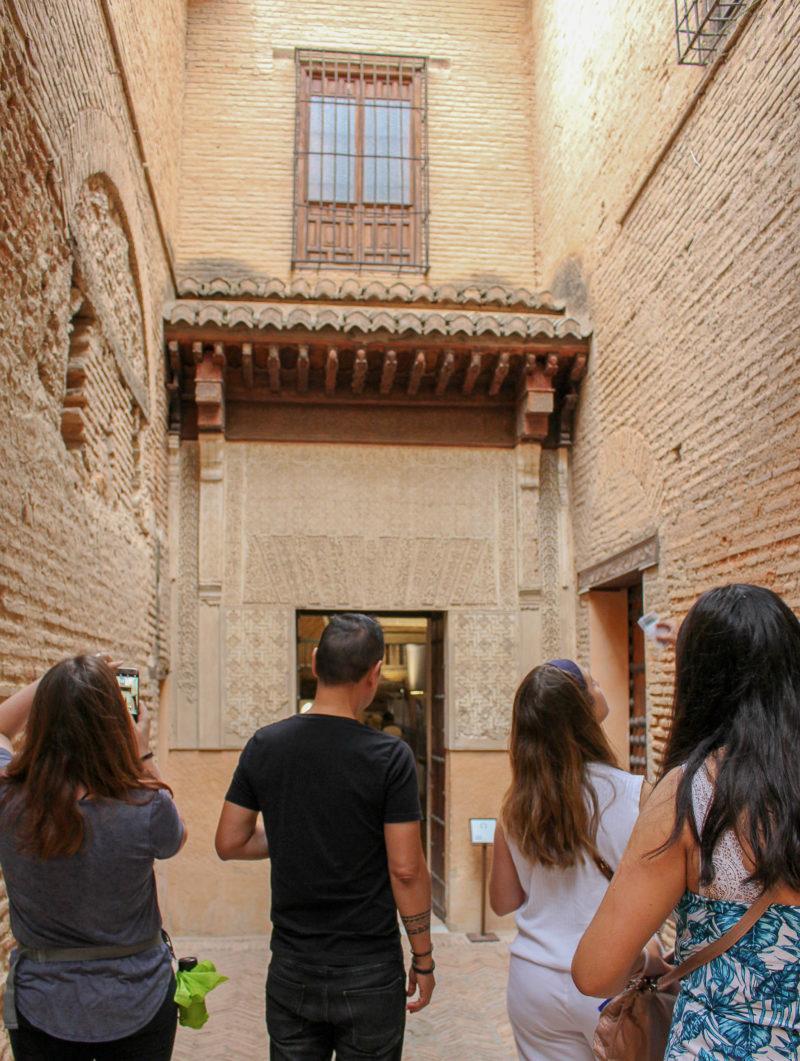Growing up in northern Virginia, I considered myself lucky to be so close to so much history. A 20-minute drive could get me to our nation’s capital, and I can’t tell you how many times I visited colonial Williamsburg on school field trips. While our history is special, it’s only about 200 years old. I had never stepped foot in anything older until we arrived in Granada, Spain. For our first “field trip” of the Trinity in Spain program, we visited the 1,131-year-old Alhambra.
The Alhambra has a very long history, longer than much of what we see in the United States. Its beginnings were first recorded in A.D. 900 as a fortress, but much of the Alhambra’s significance comes from its rebirth in the 13th century, when it was reconstructed and revitalized by the Moorish leaders. The influences of these extensions is evident, and this was left largely unchanged by the Christian reconquest in the 1400s. The Alhambra was then converted into a palace for Spanish royals King Ferdinand and Queen Isabella.
What’s truly fascinating about the Alhambra is that you can see each power’s influence. The sultans of Granada had a unique style of architecture, and their inscriptions on the walls are still visible all these years later. Angel Gonzalez, a professor from IES Madrid who is serving as our host, teacher and tour guide, explained that since the Alhambra was so beautifully created, both artistically and architecturally, the new royalty couldn’t bring themselves to destroy it. Instead, they added to its beauty, bringing a mishmash of Catholic and Muslim influences into the palace.
The Arabic inscriptions on the walls, Gonzalez explained, were actually intended to be the building itself “˜speaking.’ He said that the inscriptions were praises of Allah, as well as the building professing herself as “˜beautiful’ and a work of art. The inscriptions also contained dates of building and poetry about the beauty of the Alhambra and Allah. The influences that inspired the Catholic rulers were drawn from rich European history, especially Italian art. The colors were vibrant, and family crests and royal symbolism were imprinted in tile on walls and doors.
Having a professor like Gonzalez made this experience especially rewarding. He told us about how Granada, being the last Moorish stronghold to be taken by the Christian Reconquista, has some of the strongest ties to the old Al-Andalus (what Spain was before it became “˜Spain’). I saw this in architecture of the buildings, the dime-a-dozen tourist shops and also the pride of Granada. There weren’t only tourists inside the Alhambra when we visited; local Spaniards visit also, to pay their respects to the history of their land.
I believe the first lesson that I’ve learned about Spain while being abroad is how much pride they have in their country. As Gonzalez explained while in the gardens of the Alhambra, Spain has not had an innocent history. Their exploits have included the Reconquista, the Inquisition, the colonization “” and subsequent destruction of much of the Americas “” just to name the big three.
But Spain is proud. There is evidence in many cities of Spain “” like Toledo, Sevilla and Granada “” of different groups of people living as neighbors. Christian and Muslim neighbors sharing recipes, music and culture with one another. Simply surviving next to each other, and enjoying the other’s culture as its own way of living. Gonzalez also explained how the Muslim majority of Al-Andalus permitted the existence of Christianity, because they saw themselves as all brothers of the same God. This allowed communities to open to followers of both Islam and Christianity. This also allowed for a unique blend of cultures that Spain continues to be proud of today.
Walking in the same hallways as those who did the same hundreds of years ago is an awe-inspiring experience. You realize how small your reality is, and how quickly history is happening. We are privileged enough to step in their shoes and use this wisdom in our world today. Simply setting foot in the Alhambra and seeing a rich history that has come and gone; it’s a humbling experience.




